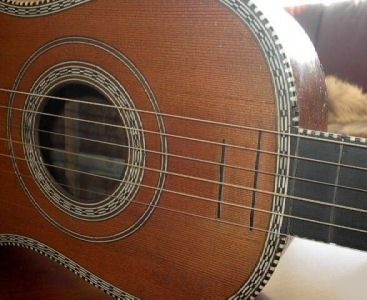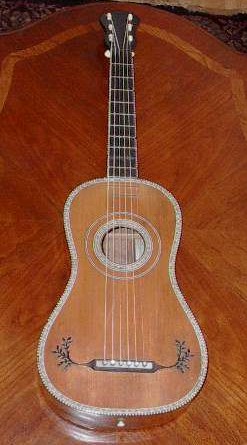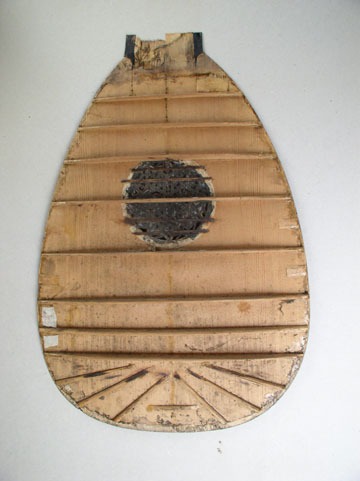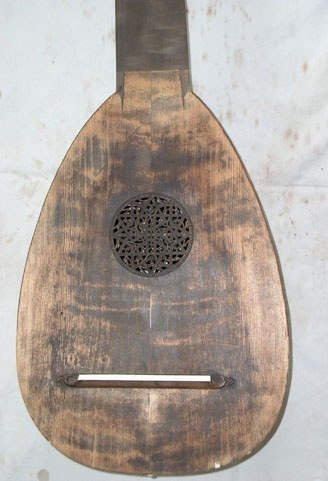I promised Joshua that I would put some more pictures of these two instruments, 1780 6 string guitar and 1764 13-course lute, that I put on the 'Bracing System' thread. We've been discussing the design and development of early instruments, and I feel that we can learn a lot from them that we can apply to our modern instruments, they also bring into question our understanding of the history of guitar design. (Who said history was just one darn thing after another!)
This guitar is by an unknown maker and dates from 1780. It had its back taken off to refix some braces. It is all original.

Internal bracing, note the angled brace under the sound hole, add one in the other direction and you've got an X brace!

Another view of the reglued braces, the bridge pad is maple, a feature which had been attributed to Hauser.

The front of the restored guitar.

Full length, the string length is 648mm. Apparently it has a wonderful balanced tone which is attributed to the 220 year old spruce top!
This a lute of 1764 that shows fan bracing, as did many of the late Baroque lutes. The fan braces are placed below the level of the bridge. The top has been off this lute before, to have the damaged rose repaired probably not long after it was made.

Fan bracing was in use as early as 1750, long before Torres and is thought to have been used to counter the increased tension of the baroque lute, which itself was a transitional instrument.

The front of the unrestored lute, a bit the worse for wear!

The fully restored lute, note the triple headbox, and we worry about the weight of the head and tuners on our six strings!
I'm collecting the photos from the developers of my own new 10-course lute later today. I'll post then as soon as possible.
Colin